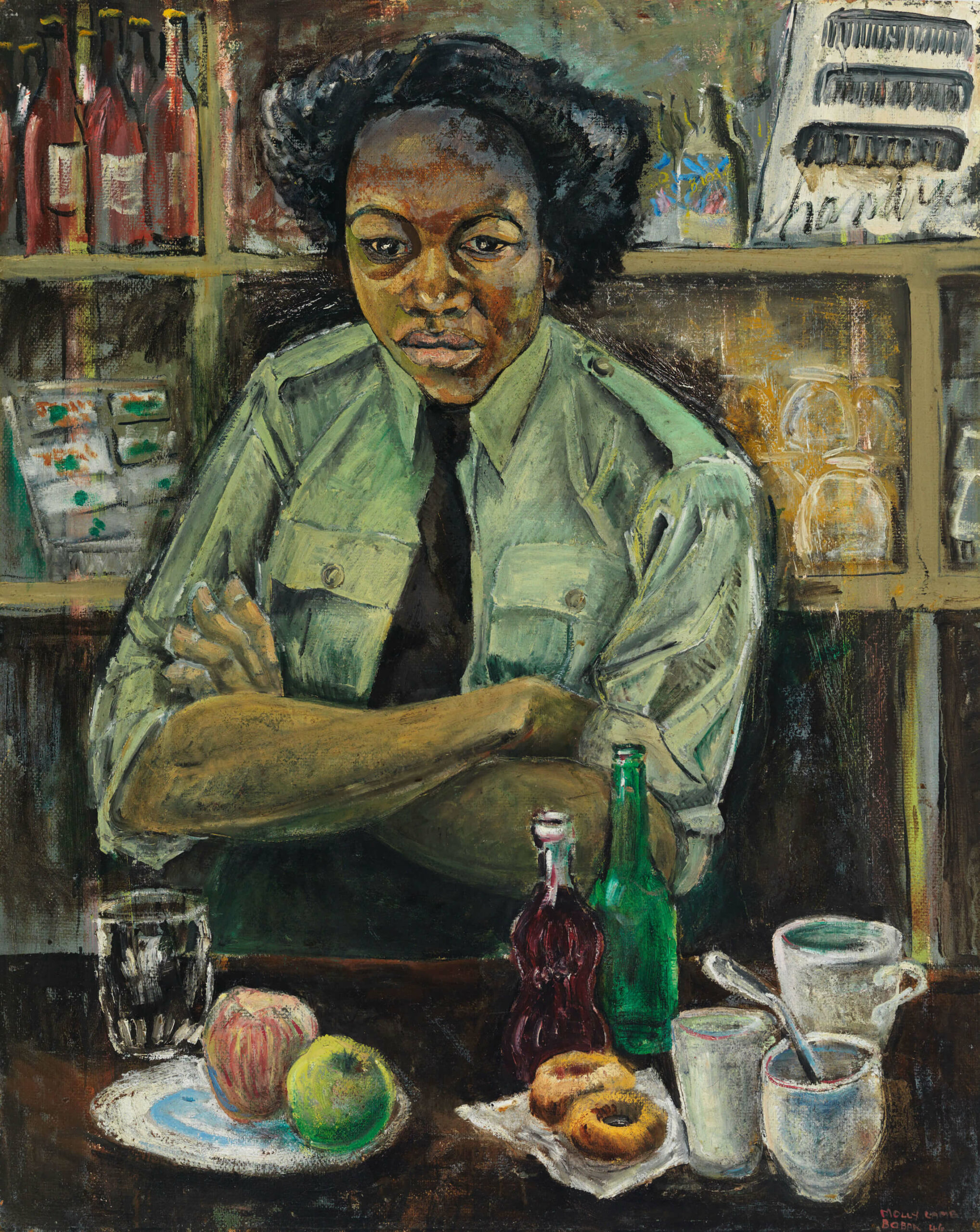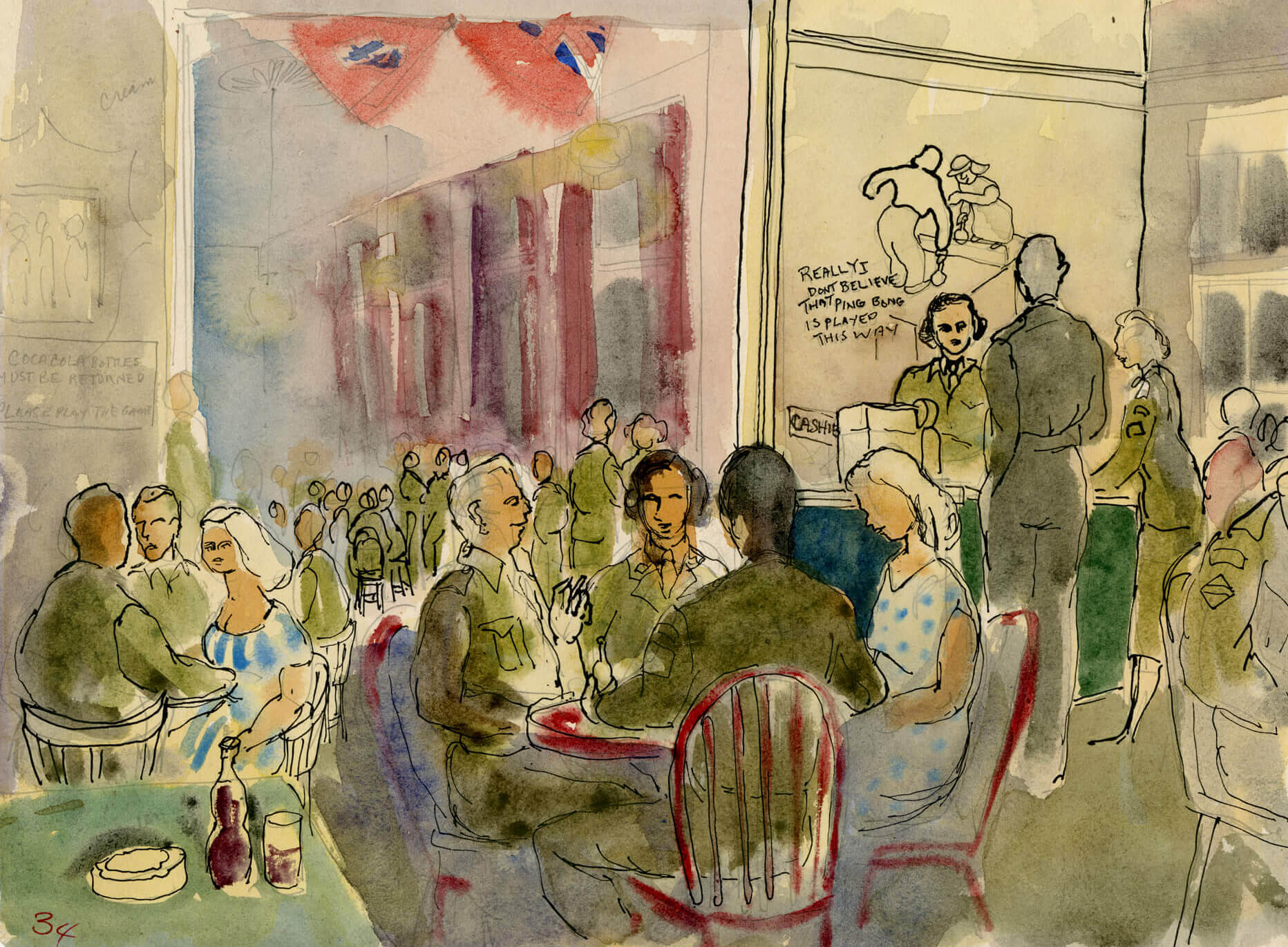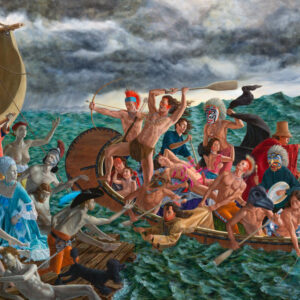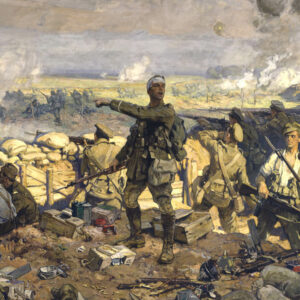Private Roy 1946

Molly Lamb Bobak, Private Roy, 1946
Oil on Masonite, 76.4 x 60.8 cm
Beaverbrook Collection of War Art, Canadian War Museum, Ottawa
In this portrait by Molly Lamb Bobak (1920–2014), Canada’s only woman official war artist in the Second World War, Sergeant—not Private—Eva May Roy glows like the background shelving and the luminous plates and mugs on the canteen counter, making her almost phosphorescent. She looks past the viewer, her stare resonant with experience and perhaps fear, as her crossed arms might indicate. Recruitment propaganda of the time focused on the femininity of women’s military service, but here Bobak suggests that Roy was relatively secure in her appearance.

Sergeant Roy has been identified because a family she worked for after the war contacted the artist’s son, who in turn communicated with the Canadian War Museum. Roy was in domestic service when she enlisted in the Canadian Army in December 1944, and, seven months later, was sent overseas to England and then to Amersfoort in the Netherlands. Bobak probably encountered her in the canteen there—a location she depicted in Inside the Auxiliary Service Canteen at Amersfoort, Holland, 1945. Roy’s sparse personnel records at the Canadian War Museum describe a thin, cheerful, sporty, dance- and music-loving woman, not at odds with Bobak’s own recollections. Nevertheless, in the portrait Bobak gives her a monumentality that challenges this description. The artist completed the picture in 1946, a year after encountering Roy, and based it on a quick sketch. This context may explain why she got Roy’s rank wrong.
Very few Canadian soldiers of colour were ever depicted as part of the Canadian War Records program, and those that were are usually impossible to trace because of their generally lesser rank, the absence of their full name, and the ongoing lack of accessibility to Second World War military records. This double invisibility was the fate, for example, of the subject in Trooper O.G. Govan, 1941, by Australian-born artist Henry Lamb (1883–1960).
Although Bobak would have been unable to view the influential canvas A Bar at the Folies-Bergère, 1882, by Édouard Manet (1832–1883) in the Courtauld Institute of Art when she was in London—it was sequestered in the country during the war—her Private Roy resembles the French masterpiece compositionally and stylistically, so she must have been familiar with it through reproduction. Indeed, by painting in a European manner, Bobak was arguably linking her work to the nineteenth-century European masters she had studied during her training at the Vancouver School of Art.

 About the Author
About the Author
 More Online Art Books
More Online Art Books
 Acknowledgements
Acknowledgements